You are using an out of date browser. It may not display this or other websites correctly.
You should upgrade or use an alternative browser.
You should upgrade or use an alternative browser.
Vintage French randonneuer's and porteurs.
- Thread starter Guinessisgoodforyou
- Start date
Yeah. Glad someone else noticed that.
The advantage is to go from the middle sized ring to the small sized ring at the bottom of a hill - via the big sized ring, loose all pace, the chain derails and then get's mangled and twisted around the cotter-pins. You say "Merde Alors!", sit at the roadside with an unusable bike, wait for a Citroen van to hitch a lift to the closest village with a Bistro, get drunk and look at the bright side of life.

In fairness, I am impressed with the wide ratios, choice of rings and sprockets and even down to a 13T on a freewheel is absolutely incredible and puts modern day tat to shame in a way.
The middle ring in the outer position I think is just down to possibly a temporary sort of add on to an existing wide ratio double - it makes no sense at all considering the left more logical set-up.
I think it's utterly fascinating that we are at the birth of gear shifting here and all the hiccups in this new tech.
The advantage is to go from the middle sized ring to the small sized ring at the bottom of a hill - via the big sized ring, loose all pace, the chain derails and then get's mangled and twisted around the cotter-pins. You say "Merde Alors!", sit at the roadside with an unusable bike, wait for a Citroen van to hitch a lift to the closest village with a Bistro, get drunk and look at the bright side of life.
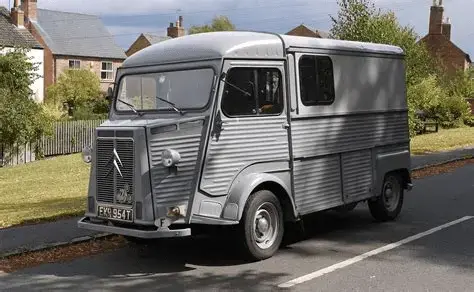
In fairness, I am impressed with the wide ratios, choice of rings and sprockets and even down to a 13T on a freewheel is absolutely incredible and puts modern day tat to shame in a way.
The middle ring in the outer position I think is just down to possibly a temporary sort of add on to an existing wide ratio double - it makes no sense at all considering the left more logical set-up.
I think it's utterly fascinating that we are at the birth of gear shifting here and all the hiccups in this new tech.
Last edited:
Was talking just this weekend with people about how multiple gears were developed for "cyclotourists" in France because people had free time. Very hard to understand today how technical developments were deliberately kept out of racing. Although I thought they did have two cogs and could flip the wheel?
The Jo Routens I saw the same weekend was so technically advanced. It holds up even today as a technical achievement. To think people would take touring so seriously is inspiring and a great contrast to competition driven development.
Even the flip-flop hubs I have seen and had on the 1910 - 1920 Dion Bouton was a bit weird - fixed on one side (properly fixed with two threads, one for a lock-ring) and a freewheel the other side. I think the general riding mode was fixed, then flip the wheel to the larger freewheel at the bottom of the climb and so at least allow to coast safely on the descent without pedal strikes on hair-pin bends.
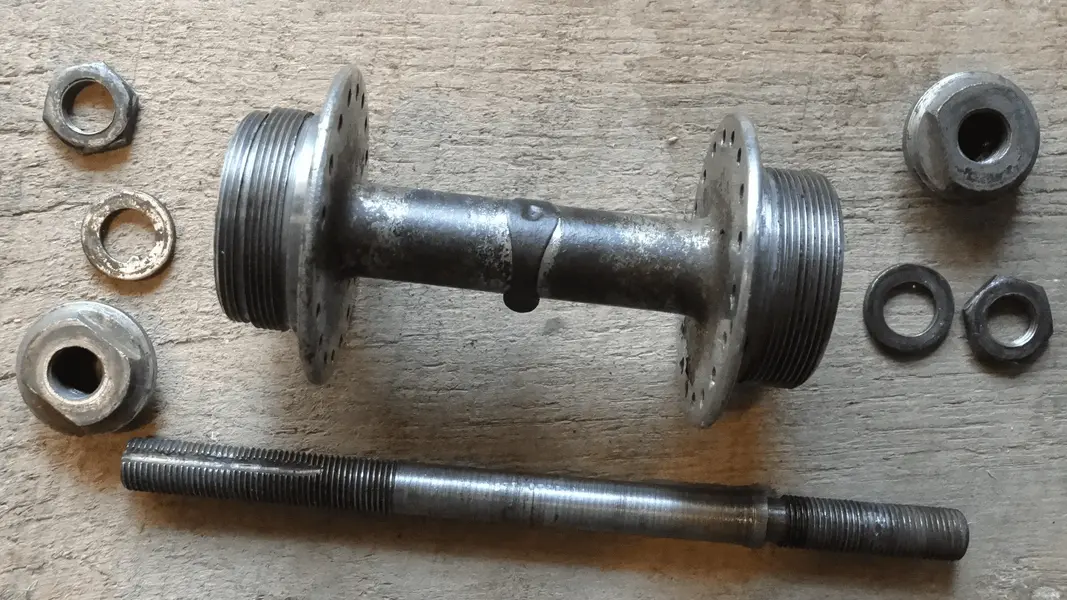
grantoury
Kona Fan
If the biggest chainring is the dominant one, you are never more than a single shift away? Honestly, I can't see the use, but it is a beautiful hiccup in a long history of development of bicycles.It is. The triple chainset on the right seems to have the largest ring in the middle position. Any idea what the advantage of that would be?
View attachment 751958
Guinessisgoodforyou
rBotM Winner
The French were industry leaders in the touring bike market. It took us years to catch up. The weird chainset is like some early 90s mtb tech where they are feeling their way I think. I could be wrong and would love a definitive answer. I think we are sadly unlikely to get one now nearly 90 years later.
Agree. The only answer would be in some historical records, write ups, news paper clipping and local / regional level reporting.
I find all this fascinating. Time to say again @Guinessisgoodforyou this thread is one of (if not) the best example led pictorial and photographic marvels helping to describe how we got here today.
Perhaps a bit off-topic thread wise, but I have a niggle in my memory banks the last big rider to maul up climbs in a whopping gear off the saddle forever would have been Pantani. Amazing to see to be honest. Hinault was known for just mauling up hill in a big gear and psyching out his adversaries but I saw a great documentary where he said for him it was a way to regulate breathing and pacing. There is evidence of this were he just would grind away rather than flit and flirt about attacking. By the Indurain era it had gone, and I understood he even experimented with triples.
It's so ironic that people went berzerk over the wonderful new invention of compact road double, when in fact the proof is it was developed and fine tuned decades upon decades before.
I find all this fascinating. Time to say again @Guinessisgoodforyou this thread is one of (if not) the best example led pictorial and photographic marvels helping to describe how we got here today.
Perhaps a bit off-topic thread wise, but I have a niggle in my memory banks the last big rider to maul up climbs in a whopping gear off the saddle forever would have been Pantani. Amazing to see to be honest. Hinault was known for just mauling up hill in a big gear and psyching out his adversaries but I saw a great documentary where he said for him it was a way to regulate breathing and pacing. There is evidence of this were he just would grind away rather than flit and flirt about attacking. By the Indurain era it had gone, and I understood he even experimented with triples.
It's so ironic that people went berzerk over the wonderful new invention of compact road double, when in fact the proof is it was developed and fine tuned decades upon decades before.
Last edited:
dirttorpedo
Senior Retro Guru
These old french cyclo tourist bikes are so cool.
Guinessisgoodforyou
rBotM Winner
1950's Mercier 650B randonneur. Owners words below.
I recently finished restoring this classic French randonneur bicycle, a Mercier from the early 1950's. It's equipped with 650B wheels and a number of rare components only seen on French bicycles of the 1940's – 50's.
I acquired the bike from a French seller on eBay, and comprehensively restored it to the original drivetrain, while also making period-correct tweaks to the wheels, handlebars, and saddle to make it more comfortable to ride.
This type of derailleur is called a "chainstay mount" for obvious reasons, and can typically handle 3-4 speeds. Taking over from the more eccentric designs of the 1930's and 40's like the Cambio Corsa or Osgear, chainstay-mounted derailleurs were the most common type of derailleur until the mid-to-late 1950's, although still a minority when compared to the numbers of internally geared 2 and 3-speed hubs by Sturmey Archer and Sachs in the same period.
They were manufactured by a number of different companies, but the most popular were Simplex, Huret, and Cyclo. Their designs typically utilized either push-rod or pull-chain to move the derailleur cage horizontally across the gears.
The rear derailleur is a Simplex Route Leger, one of the most iconic designs of this style. It's partially obscured by the protector. Derailleur cage tension was achieved through an external spring that hooked from a mount on the chainstay near the bottom bracket to the top of the cage.
The front derailleur, a Simplex competition model with a rare cage that doubles as a chain guard. Sometimes referred to as a "suicide" derailleur, it's actually quite easy to use. The rider reaches down and gently pushes the rod inwards or outwards to change gear. The crankset is a no-name 50.4 style with 50 & 42-tooth chainrings. The pedals shown are Lyotard models, but I will be replacing them with rare Sanzax pedals soon.
The original wheelset was a set of rusty Rigida chrome rims laced to Maillard hubs, but I don't think they were original to the bike, since the rear hub was spaced to 120mm O.L.D. while the actual rear spacing of this bike was 114mm. I found a period-correct set of Liberia hubs, and laced them to brand new Velo-Orange "Diagonale" rims, and added a 4-speed Atom freewheel with 16/18/20/22 speeds. The tires are new Panaracer "Col De La Vie" 650B x 38mm.
Jeay brakes, a sort of early cantilever / centerpull design that was revisited thirty years later by SunTour with their "roller-cam" brakes. The saddle is an Ideale 92 Daniel Rebour model, with matching saddle clamp, and the pump is a vintage Solibloc.
The fenders and racks are original, with cool little tin boxes on the rear rack for tools. The front light looks to be JOS radios type, but I haven't yet had the chance to fix the generator and lighting.









 Overall, the bike rides very smoothly and shifts gears well. I might put a set of upright bars on it soon, but otherwise I think it's finished for now. As an introduction to these mysterious and eccentric, but very beautiful breed of classic French bicycles, I think it was perfect. I'm hooked on them now, and already planning more restoration projects for the future.
Overall, the bike rides very smoothly and shifts gears well. I might put a set of upright bars on it soon, but otherwise I think it's finished for now. As an introduction to these mysterious and eccentric, but very beautiful breed of classic French bicycles, I think it was perfect. I'm hooked on them now, and already planning more restoration projects for the future.
I recently finished restoring this classic French randonneur bicycle, a Mercier from the early 1950's. It's equipped with 650B wheels and a number of rare components only seen on French bicycles of the 1940's – 50's.
I acquired the bike from a French seller on eBay, and comprehensively restored it to the original drivetrain, while also making period-correct tweaks to the wheels, handlebars, and saddle to make it more comfortable to ride.
This type of derailleur is called a "chainstay mount" for obvious reasons, and can typically handle 3-4 speeds. Taking over from the more eccentric designs of the 1930's and 40's like the Cambio Corsa or Osgear, chainstay-mounted derailleurs were the most common type of derailleur until the mid-to-late 1950's, although still a minority when compared to the numbers of internally geared 2 and 3-speed hubs by Sturmey Archer and Sachs in the same period.
They were manufactured by a number of different companies, but the most popular were Simplex, Huret, and Cyclo. Their designs typically utilized either push-rod or pull-chain to move the derailleur cage horizontally across the gears.
The rear derailleur is a Simplex Route Leger, one of the most iconic designs of this style. It's partially obscured by the protector. Derailleur cage tension was achieved through an external spring that hooked from a mount on the chainstay near the bottom bracket to the top of the cage.
The front derailleur, a Simplex competition model with a rare cage that doubles as a chain guard. Sometimes referred to as a "suicide" derailleur, it's actually quite easy to use. The rider reaches down and gently pushes the rod inwards or outwards to change gear. The crankset is a no-name 50.4 style with 50 & 42-tooth chainrings. The pedals shown are Lyotard models, but I will be replacing them with rare Sanzax pedals soon.
The original wheelset was a set of rusty Rigida chrome rims laced to Maillard hubs, but I don't think they were original to the bike, since the rear hub was spaced to 120mm O.L.D. while the actual rear spacing of this bike was 114mm. I found a period-correct set of Liberia hubs, and laced them to brand new Velo-Orange "Diagonale" rims, and added a 4-speed Atom freewheel with 16/18/20/22 speeds. The tires are new Panaracer "Col De La Vie" 650B x 38mm.
Jeay brakes, a sort of early cantilever / centerpull design that was revisited thirty years later by SunTour with their "roller-cam" brakes. The saddle is an Ideale 92 Daniel Rebour model, with matching saddle clamp, and the pump is a vintage Solibloc.
The fenders and racks are original, with cool little tin boxes on the rear rack for tools. The front light looks to be JOS radios type, but I haven't yet had the chance to fix the generator and lighting.
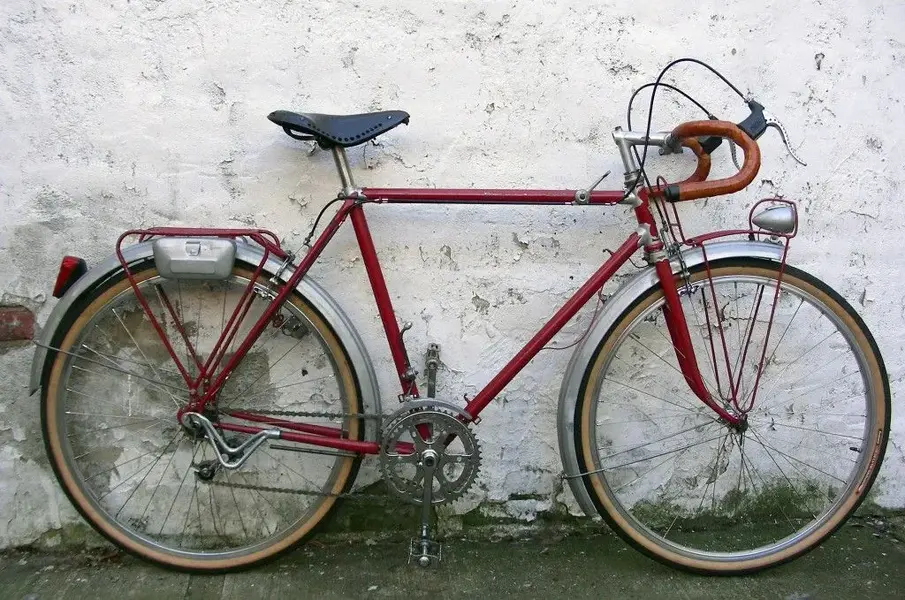
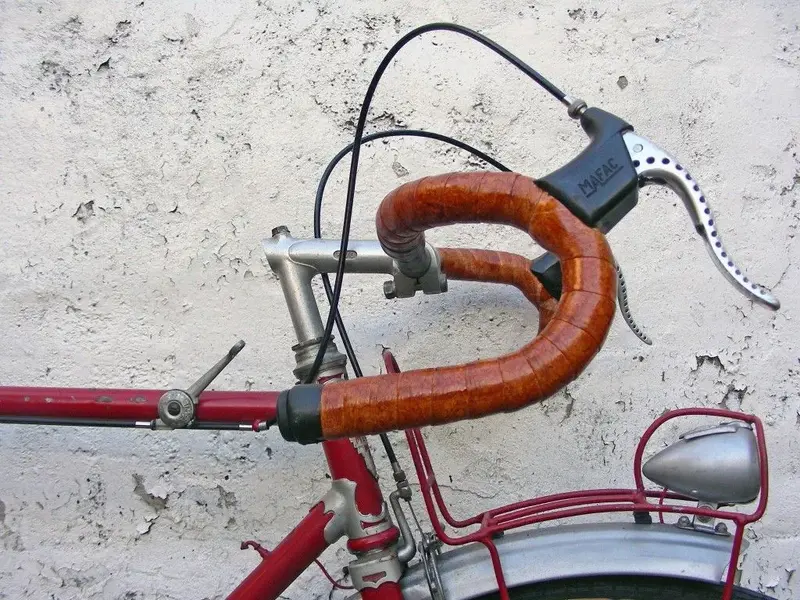
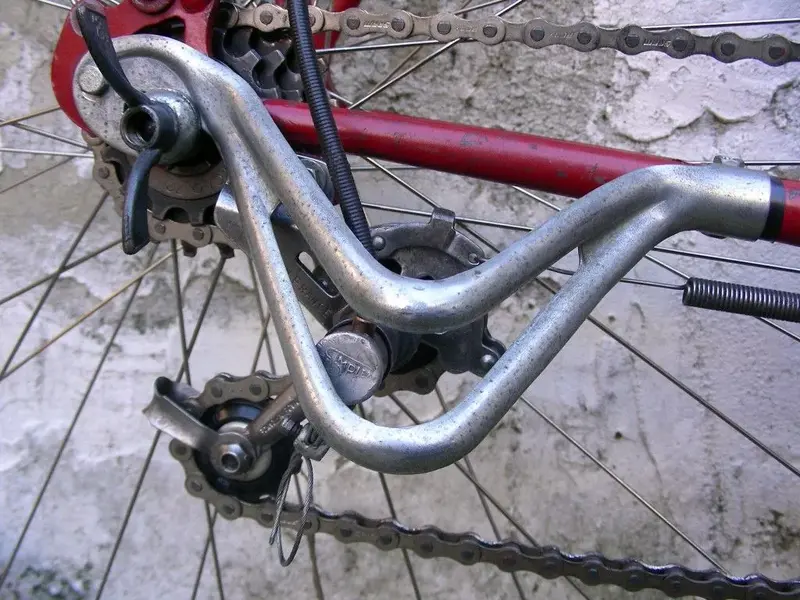
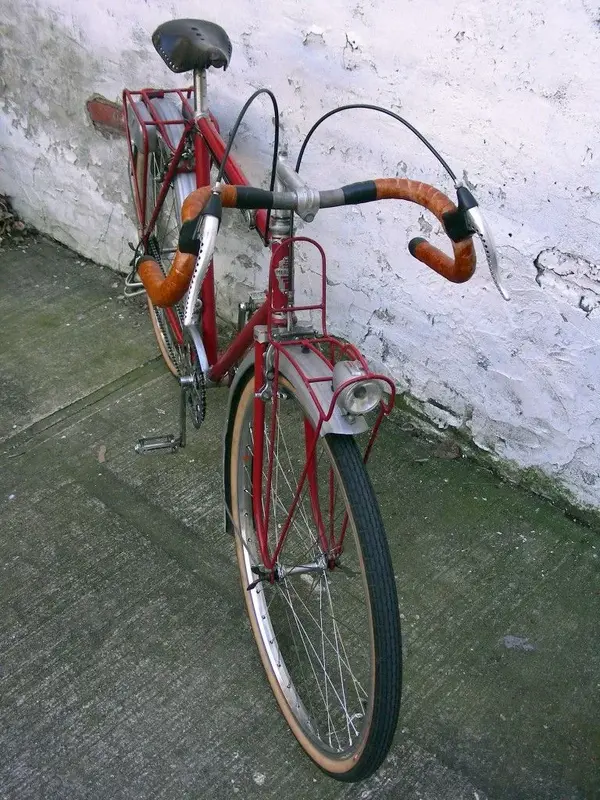
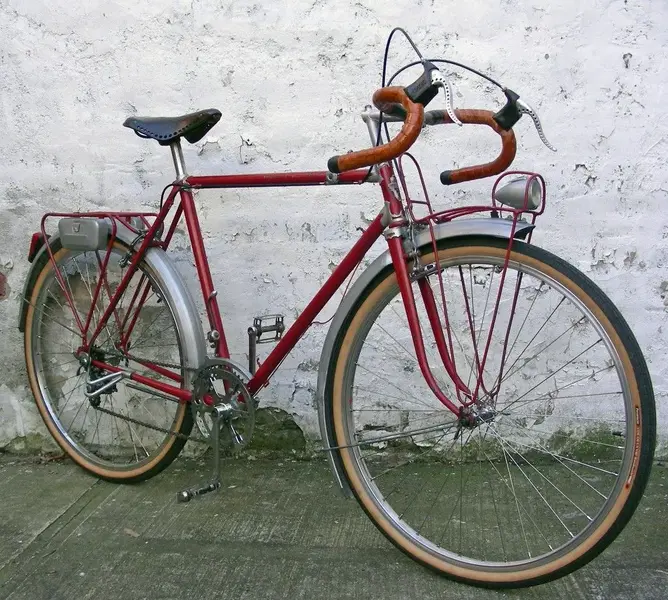
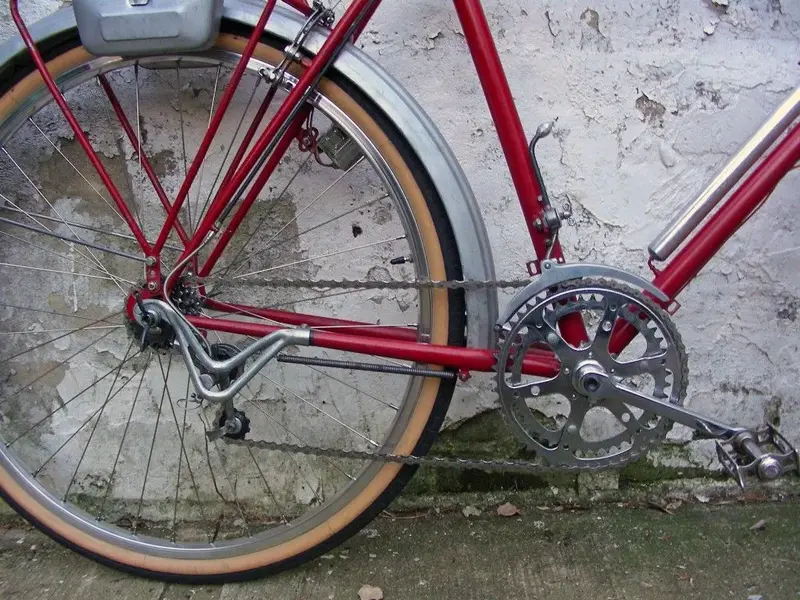
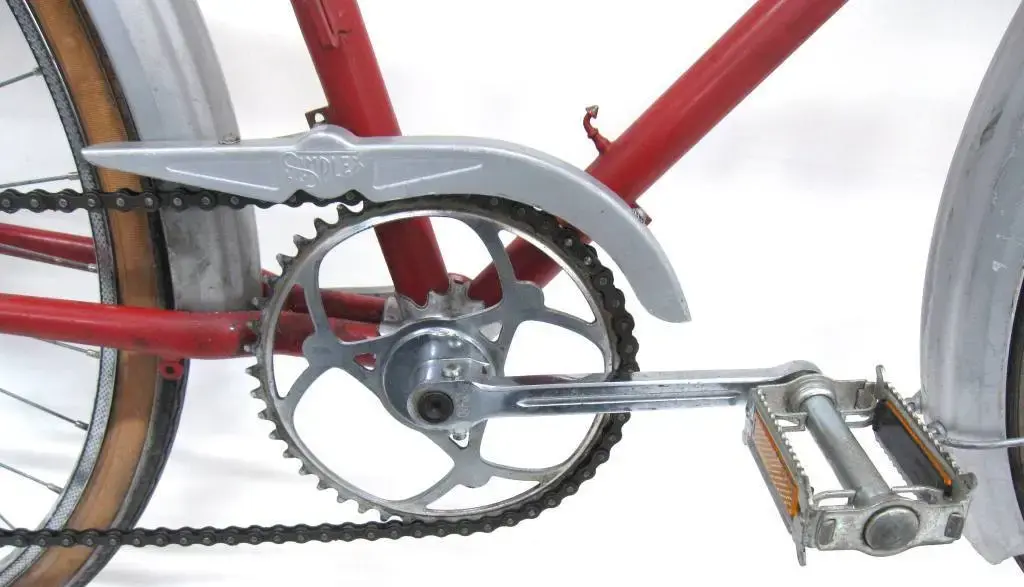
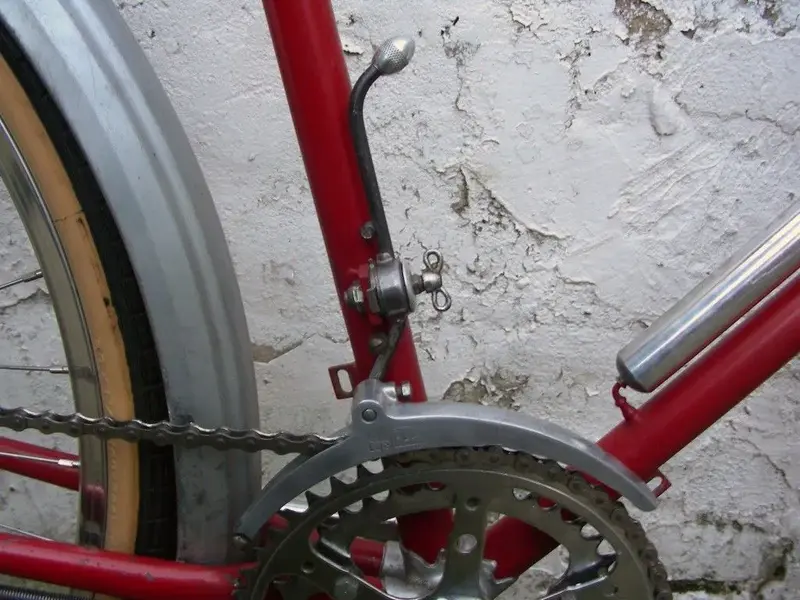
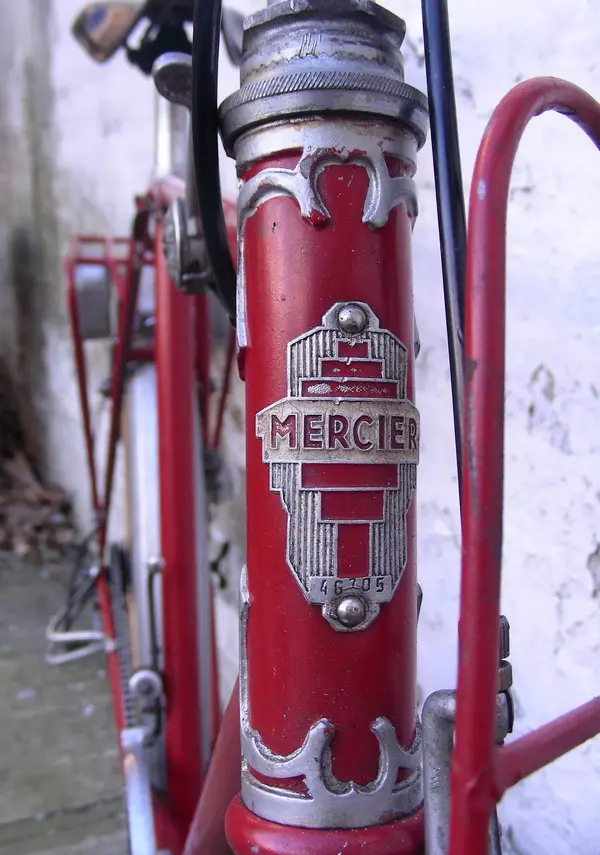
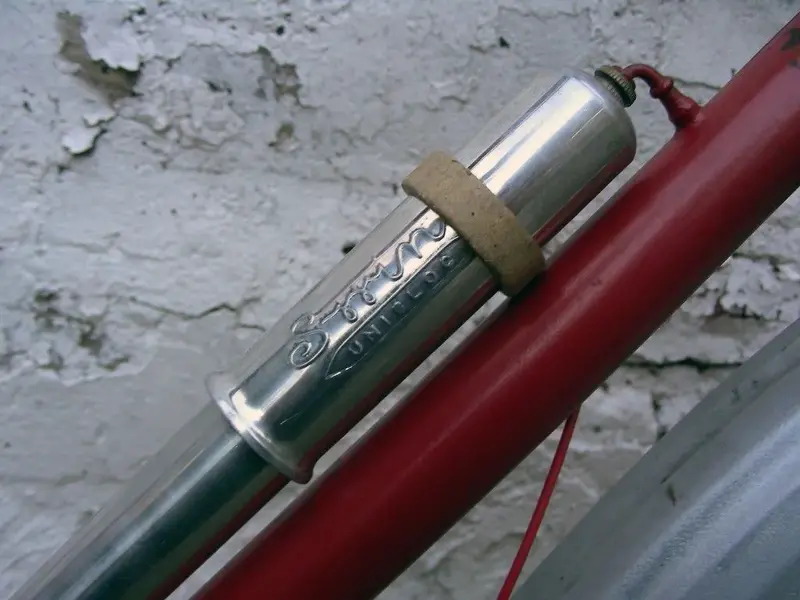 Overall, the bike rides very smoothly and shifts gears well. I might put a set of upright bars on it soon, but otherwise I think it's finished for now. As an introduction to these mysterious and eccentric, but very beautiful breed of classic French bicycles, I think it was perfect. I'm hooked on them now, and already planning more restoration projects for the future.
Overall, the bike rides very smoothly and shifts gears well. I might put a set of upright bars on it soon, but otherwise I think it's finished for now. As an introduction to these mysterious and eccentric, but very beautiful breed of classic French bicycles, I think it was perfect. I'm hooked on them now, and already planning more restoration projects for the future.
Last edited:
Guinessisgoodforyou
rBotM Winner
Andre Bertin 650B three speed conversion. Owners words below.
Made of Reynolds 531 steel and originally designed for 27" wheels, I converted it to 650B with the help of some long-reach center pull brakes. The rear hub is a three-speed Sturmey Archer, and I mounted the shifter on the stem. The crankset is a modern reproduction of the TA Pro 5 Vis crankset, made by Electra It has chain guards built in on both sides of the chain ring. I re-used the stem, handlebars, and MAFAC brake levers that were originally on my Mercier randonneur bike. I finished it off with some V.O Zeppelin mudguards and Panaracer Col De Vie tires.
This was one of those rare bikes that rode perfectly on the very first test ride around the block. Perhaps it was the fact that the stem and bars were already sized to me, or the overall simplicity of the three-speed system. Whatever the case, it's a fun ride and well adapted to the city streets with its wide tires and easy gearing.



Made of Reynolds 531 steel and originally designed for 27" wheels, I converted it to 650B with the help of some long-reach center pull brakes. The rear hub is a three-speed Sturmey Archer, and I mounted the shifter on the stem. The crankset is a modern reproduction of the TA Pro 5 Vis crankset, made by Electra It has chain guards built in on both sides of the chain ring. I re-used the stem, handlebars, and MAFAC brake levers that were originally on my Mercier randonneur bike. I finished it off with some V.O Zeppelin mudguards and Panaracer Col De Vie tires.
This was one of those rare bikes that rode perfectly on the very first test ride around the block. Perhaps it was the fact that the stem and bars were already sized to me, or the overall simplicity of the three-speed system. Whatever the case, it's a fun ride and well adapted to the city streets with its wide tires and easy gearing.
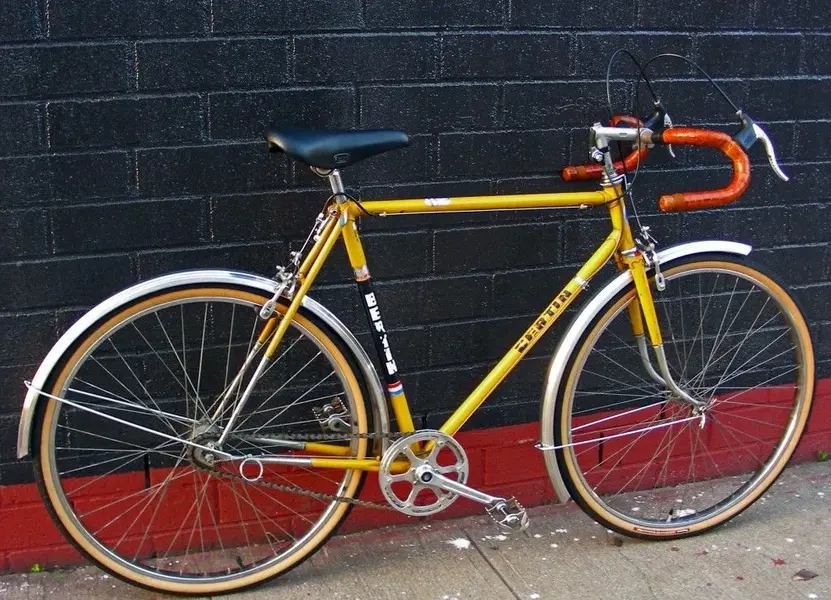
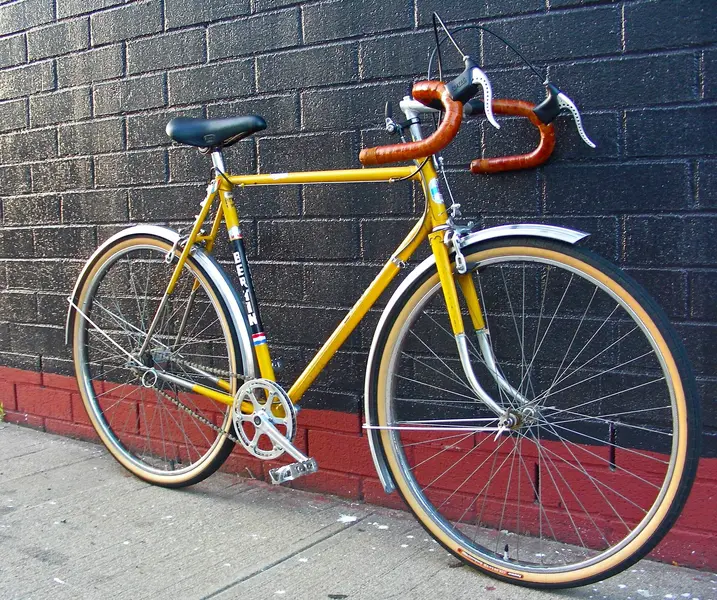
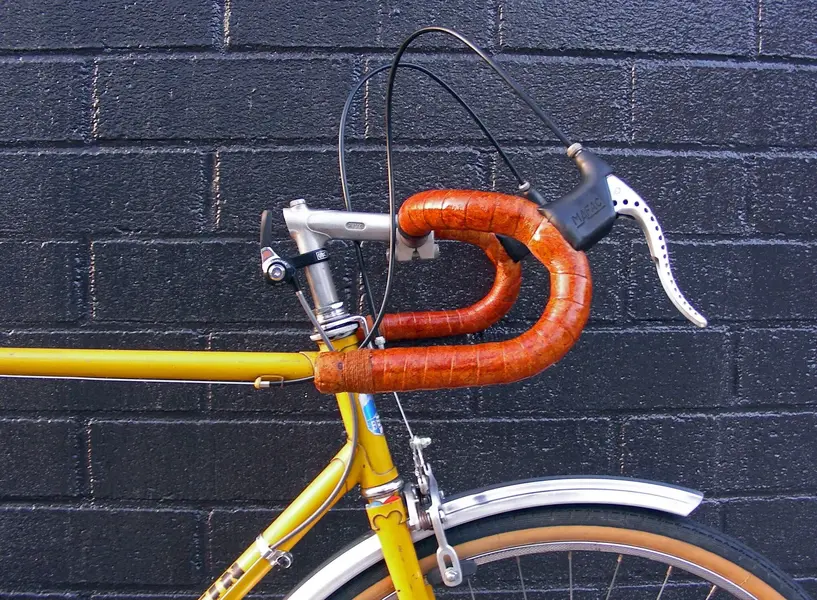
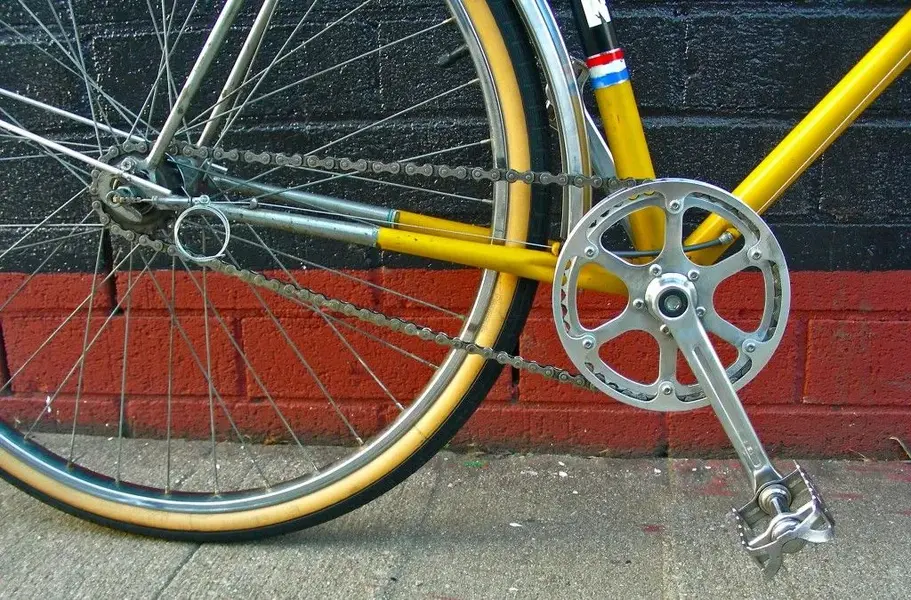
Latest posts
-
-
🐝 Dave lloyd bees neez MTB pro test bike 🐝 British steel 🇬🇧
- Latest: retrobikeguy
-
-
-
